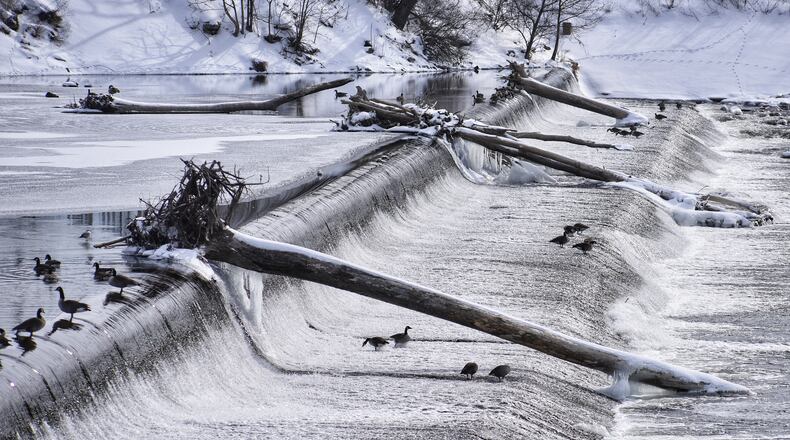After a bitterly cold overnight Friday into today, with temperatures in the single digits and wind chills close to zero for the area, temperatures will rise while the sun peeks through occasionally.
But temperatures will remain below freezing today, topping out at 29 degrees, according to the Journal-News media partner WCPO-TV.
And temperatures overnight going into Sunday will be in the high teens, but the day will also bring the first readings of above freezing in more than a week under mostly cloudy skies, topping out at 40 degrees.
Monday will mark a continuation of significant warming with a high temperature of 38 degrees but that’s just a preview of the relatively balmy weather to come on Tuesday and Wednesday when highs are expected to be 45 and 50 degrees respectively.
It’s a welcomed warming for the region, including Fairfield, where city officials said the salt needed to handle 10-plus inches of accumulated snow in the last week was sizable.
“We average 4,050 tons per winter in salt usage. So far this winter, we have used about 3,900 tons but about 3,500 tons of that was in the last two to three weeks. We used about 1,000 tons just in the last few days dealing with the 10 total inches of snow and ice,” said Scott Timmer, assistant city manager for Fairfield.
The largest snowfall totals in recent years for the area has been challenging for the drivers and other personnel operating city snowplows and salt trucks, he said.
“Our crews have worked long hours under some pretty tough circumstances over the last couple of weeks to keep the roads safe,” said Timmer.
And with any big thaw after an extended cold snap comes concerns about broken water mains, especially older ones, bursting underground.
The increase frequency of water main breaks “is due primarily to temperature changes causing the ground to move, thus triggering cracks and splits in the older cast iron mains.”
“Fairfield is making a consistent and strategic effort to improve the distribution system through projects that replace problematic and aging cast iron water mains with new ductile iron pipe,” said Timmer.
About the Author

